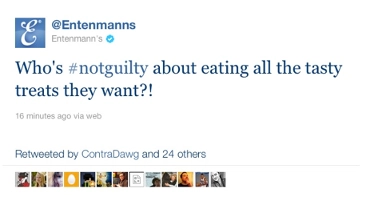In the age of heightened social awareness, a slip up can cost your brand greatly as consumers learn to wield the bargaining power that they have to influence change.
Even with established brand values that line up with what your audience believes in and content tailored towards their principles and interests, it is possible to make mistakes as a brand. What matters is how your brand bounces back from this and how it addresses its mistake. According to a report by Crisp Thinking on Crisis Impact, 90% of consumers are likely to purchase from a brand that responds well to a crisis.
Hence, we’ve got some pointers for you to take note of just in case you ever need to overcome a marketing crisis. The main aim of addressing your brand’s mistake is to display maturity, self-awareness and a willingness to do better. It shows your audience that you are prepared to take responsibility for your actions as a brand, which is vital when it comes to righting wrongs on such a large scale.
This brings us to our first piece of advice.
-
Keep your audience informed
Before responding to the crisis, take a moment to understand the issue you are dealing with. It is a good practice to keep your audience in the loop when you are investigating a crisis. Taking a few minutes to release a holding statement, something along the lines of “We are aware of this matter and we are investigating the issue…” helps to avoid further assumptions about the issue being spread around. It’s a good way of somewhat hitting pause so that you can take the time to understand the crisis and in turn, address it effectively. Take Spotify for example – when some users were suddenly unable to access the Spotify app on their iOS devices, Spotify took to Twitter to acknowledge the issue and promised to keep their audience updated as they investigated the matter (Source: nz.news.yahoo.com).

An additional way to counter the issue of having to act fast but needing to take time to learn how to respond to a crisis accurately as mentioned in the previous point is to make use of the ability to archive or hide your posts and turn off comments.
Functions like this can help to limit the reach of your posts and minimise the impact that it has on your brand’s reputation. This does not mean that it is wise to just delete or archive a post and act like it never happened, or to limit what people can say about it and act like it isn’t a big deal! Rather, it is wise to take some time to regroup (not too long though, remember that you’re working on borrowed time).
When you get a whiff of a crisis, using these abilities allows you to take more time to understand the matter at hand before deciding how to proceed and respond while limiting the impressions made by your post and the effect it has on your brand.
-
Listen and Understand
Acting quickly to a crisis without having understood the situation fully and knowing all the facts could pull you even deeper into your mess instead of getting you out of it. So what are some things you really have to think about before responding to a crisis?
- Identify the crisis, what is the issue at hand?
- What allowed for the mistake to be made?
- What must be done to overcome the issue effectively?
- Who are the stakeholders in this situation and how can you help them?
- How can you make sure the mistake does not crop up again?
It is far better to know all you have to know about the issue before even thinking about how to respond to it. Your response needs to be targeted and hit its mark for it to be effective in helping your brand recover from its crisis. Hence, get the accurate information you require, and then act on it accordingly and quickly so that you can get the right response to your consumers as fast as possible.

-
Respond honestly and effectively
Once you have taken the time to fully comprehend what you are dealing with, you’ll likely find yourself more equipped to effectively address the crisis.
On that note, if you have found that your brand has made a genuine mistake, admitting that you have messed up is far better than not saying anything at all and waiting for the crisis to die down and for people to forget about it because it’s possible that people won’t. The Crisp Thinking report also states that 20% of respondents felt that the biggest mistake a brand could commit is to ignore the crisis and fail to address it. 28% of them felt that the biggest mistake would be for a brand to avoid responsibility for their mistake. From this, it goes without saying that leaving your crisis to manage itself is a poor plan of action, and does nothing to save your brand from losing the trust and confidence of consumers and audience.
A good example of a brand that effectively overcame its crisis by doing this is Entenmann’s. The brand blindly rode on the bandwagon of a trending hashtag on Twitter, #NotGuilty, which was trending in reference to the Casey Anthony murder trial. The hashtag was trending as people responded to the verdict of the trial – Anthony had been acquitted of her 2-year-old daughter’s murder, and there were conflicting views on the matter. Some felt that it was unjust after viewing the evidence that had been presented in the case, and others felt that the trial and its verdict had been fair. Clearly, this was not a hashtag to be used lightly.

But Entenmann’s missed the memo, tweeting “Who’s #notguilty about eating all the tasty treats they want?!” as the hashtag was trending. Needless to say, this was not received well by the public by any means, but the brand reacted quickly and sincerely, apologising for their misstep and being honest about their oversight.
They tweeted, “Sorry everyone! We weren’t trying to reference the trial in our tweet! We should have checked the trending hashtag first” and admitted in another follow-up tweet that their post had been “insensitive, albeit completely unintentional”, emphasising that they were “sincerely sorry”. This helped to manage the crisis effectively as people could see that the brand was taking ownership of their actions and putting in the effort to fix their mess. This shows how responding to a mishap effectively as a brand rather than staying silent can save your brand from being smeared by others and realign it with its values and audience.
It is never an easy feat to deal with a brand crisis. Different people respond differently, and sometimes, no matter how much effort you put into reversing a mishap, the damage has already been done! But it is so important to try, because it is the least you must do when you have messed up as a brand. Your consumers should always come first, and that means making sure that you keep learning from mistakes and striving to create the best possible content for them regardless.
— —
Hero image: Varvara Grabova, Unsplash
